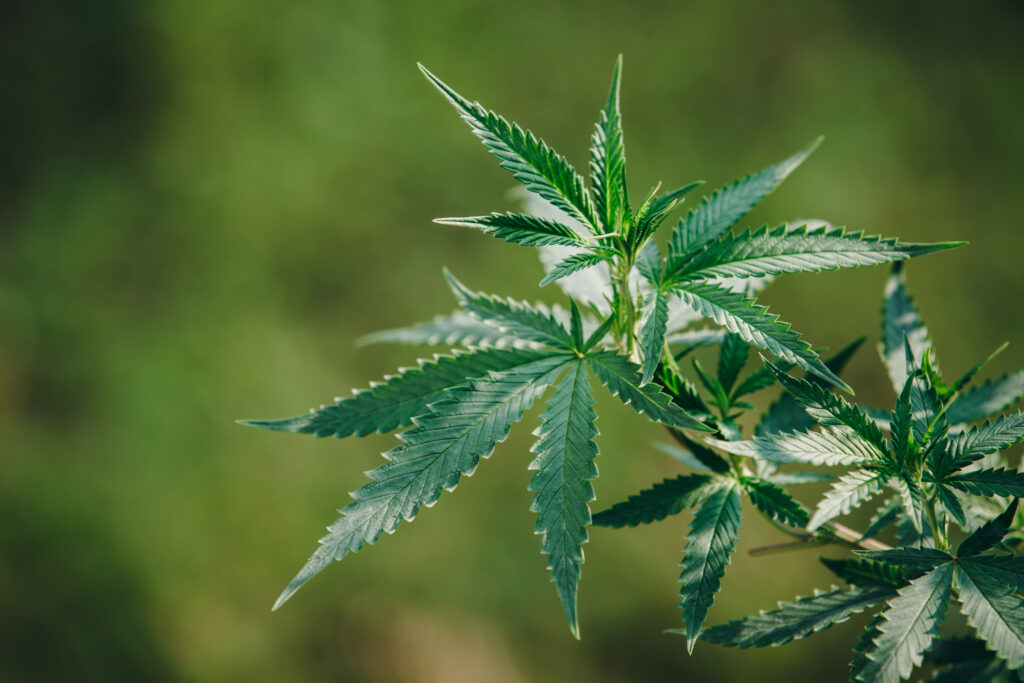The topic of marijuana, often referred to as cannabis, has increasingly found its way into public discourse. From its medicinal properties to its recreational use, the conversation around marijuana is as complex as it is controversial. As laws and perceptions around marijuana continue to evolve, the public must be informed about the basics of marijuana—what it is, how it affects the body, its legal status, and much more. This article aims to shed light on the most commonly asked questions about marijuana, providing a foundational understanding of the plant, its use, and its place in society today.

What are the different types of marijuana?
Marijuana, known scientifically as Cannabis sativa, comes in various forms, each with distinct characteristics and effects. Broadly speaking, marijuana can be classified into three main types: indica, sativa, and hybrid.
- Indica strains are believed to have a relaxing effect on the user. They are typically recommended for nighttime use.
- Sativa strains are known for their energizing effects, often recommended for daytime use.
- Hybrid strains are a blend of indica and sativa, offering a balance between relaxation and energization.
Composition
The effects of marijuana are primarily attributed to two key compounds: THC (Tetrahydrocannabinol) and CBD (Cannabidiol). THC is the psychoactive component that gives users the “high” feeling, while CBD is known for its medicinal properties, such as pain relief, without causing a high.
Consumption Methods
Marijuana can be consumed in several ways, each affecting the user differently:
- Smoking: The most traditional method, offering quick onset of effects.
- Vaping: A less harmful alternative to smoking, with a similar onset of effects.
- Edibles: Foods infused with marijuana, offering a delayed but prolonged effect.
- Topicals: Creams and lotions for localized relief without psychoactive effects.
Legal Status
The legal status of marijuana varies significantly around the world and even within countries. In some places, it’s fully legal for both medicinal and recreational use, while in others, it remains completely illegal.
State of Mississippi legalization
Understanding Missouri’s Marijuana Laws
Health Impacts
Marijuana use can have various short-term effects, such as altered senses, mood changes, impaired body movement, difficulty with thinking and problem-solving, and impaired memory. However, long-term or heavy use can lead to more significant health issues, including addiction, altered brain development, and respiratory problems if smoked.
Economic Impact
The legalization of marijuana has led to the growth of a significant legal cannabis industry, encompassing cultivation, distribution, and retail. This has resulted in substantial tax revenue in regions where it’s legal, along with job creation and economic growth.
Cultural Impact
Marijuana has a long history and has been used in various cultures for medicinal, religious, and recreational purposes. Its legalization and acceptance in mainstream culture have significantly shifted over the years, influencing music, movies, and public opinion.
Medicinal Uses
Marijuana has been used to treat a wide range of medical conditions, including chronic pain, nausea, epilepsy, and multiple sclerosis. Its efficacy and safety for medicinal purposes continue to be a subject of research and debate.
Recreational Use
Recreational use of marijuana refers to using the substance for enjoyment rather than for health purposes. While it can provide relaxation and enhance certain experiences, it’s important for users to be aware of the legal and health implications.
Future Prospects
The future of marijuana, both medicinally and recreationally, is a subject of ongoing debate. As research continues and public opinion shifts, it’s likely that we’ll see further changes in laws, usage patterns, and societal attitudes toward marijuana.
Understanding the basics of marijuana is crucial for navigating the discussions and decisions related to its use, legality, and impact on society. Whether you’re considering using marijuana for medicinal or recreational purposes, or simply seeking to be more informed about the topic, it’s important to approach the subject with an open mind and a critical eye toward the sources of your information.
How does marijuana affect the brain?
Marijuana’s effects on the brain are both immediate and long-term, significantly influenced by factors like the amount consumed, the concentration of THC, and the user’s history with the drug. Here’s an in-depth look at how marijuana interacts with the brain.
Immediate Effects
Upon consumption, THC quickly enters the bloodstream and makes its way to the brain, where it binds to cannabinoid receptors. These receptors are part of the endocannabinoid system, which plays a role in various functions, including mood, memory, appetite, and pain sensation. The activation of these receptors by THC is what leads to the “high” associated with marijuana use, characterized by:
- Altered perceptions and mood
- Impaired coordination
- Difficulty with thinking and problem-solving
- Distorted sense of time
Memory and Learning
THC affects the hippocampus, the region of the brain responsible for forming new memories. This can result in difficulties with learning and memory recall while under the influence. Studies suggest that regular marijuana use, especially when started at a young age, could impair cognitive development and lead to long-term memory issues.
Reward System
Marijuana use activates the brain’s reward system, releasing dopamine and creating feelings of pleasure. This mechanism can lead to the drug’s addictive potential, especially in individuals with a predisposition to substance use disorders. Regular use can alter the brain’s natural reward circuits, making it difficult to enjoy other activities without the drug.
Mental Health
Research indicates a complex relationship between marijuana use and mental health. For some, especially those with a genetic vulnerability, marijuana can increase the risk of developing mental health disorders, including schizophrenia and depression. However, it’s also used by some individuals to alleviate symptoms of anxiety and PTSD, highlighting the need for further research into its safe and effective medicinal applications.
Adolescents and Young Adults
The impact of marijuana on the developing brain is particularly concerning. Adolescents and young adults who use marijuana may face a higher risk of affecting their cognitive development, leading to potential issues with attention, memory, and learning. The earlier the use begins, the greater the potential impact.
Neuroplasticity
Some studies suggest that marijuana use can affect neuroplasticity, the brain’s ability to adapt and reorganize itself. This can have both positive and negative implications, potentially aiding in pain management and treatment of certain neurological disorders but also contributing to cognitive impairments and mental health issues.
Long-term Use
Chronic marijuana use has been linked to alterations in brain structure, particularly in areas related to memory and emotion. These changes may contribute to the development of addiction and decrease cognitive functions over time.
Medicinal Benefits
Despite the potential risks, cannabinoids—compounds found in marijuana—have shown promise in treating certain medical conditions. CBD, in particular, is being studied for its potential to treat epilepsy, anxiety, and other health issues without the psychoactive effects of THC.
Harm Reduction
For those who use marijuana, understanding its effects on the brain can inform safer consumption practices. Limiting use, choosing lower THC products, and being aware of one’s mental health and family history can help mitigate risks.
Future Research
As marijuana becomes legal in more places, it opens up opportunities for more comprehensive research. Future studies will likely provide deeper insights into how marijuana affects the brain, informing both medical treatment and public policy.
Understanding how marijuana interacts with the brain is crucial for users, healthcare professionals, and policymakers alike. As society continues to navigate the complexities of marijuana legalization and use, fostering an informed and nuanced conversation about its effects is essential for making educated decisions about consumption and regulation.
How does marijuana interact with other medications?
The interaction between marijuana and other medications is a critical area of concern and study, especially as the use of cannabis for both medicinal and recreational purposes becomes more widespread. Understanding these interactions is vital for ensuring patient safety and the effectiveness of treatments. Here’s a comprehensive overview:
Mechanisms of Interaction
- Metabolic Competition: Many drugs, including components of marijuana like THC and CBD, are metabolized by enzymes in the liver, particularly by the cytochrome P450 system. Cannabis can inhibit these enzymes, potentially leading to slower metabolism of other medications, increasing their effects and risk of toxicity.
- Synergistic Effects: Marijuana may amplify the effects of certain drugs, such as opioids, benzodiazepines, and alcohol, leading to increased sedation, respiratory depression, and even life-threatening complications.
- Antagonistic Effects: In some cases, marijuana might counteract the effects of certain medications, such as those used for blood pressure control, which could undermine the effectiveness of treatment.
Specific Drug Interactions
- Blood Thinners: Cannabis can potentially increase the effect of blood thinners like warfarin, raising the risk of bleeding.
- Epilepsy Medications: CBD, approved for treating certain forms of epilepsy, may interact with other anti-seizure medications, necessitating adjustments to dosages.
- Psychiatric Medications: Interactions with drugs used to treat anxiety, depression, and psychotic disorders can be unpredictable, sometimes worsening the conditions they’re meant to treat.
What are the effects of long-term marijuana use?
Long-term marijuana use can have a range of effects on the body and mind. Understanding the long-term implications is crucial for anyone considering or currently using marijuana over extended periods. Here’s a detailed exploration:
Physical Health Effects
- Respiratory Issues: Regular smoking of marijuana can lead to respiratory problems similar to those caused by smoking tobacco, including chronic cough, bronchitis, and an increased risk of lung infections.
- Cardiovascular Risks: Marijuana use can increase heart rate and affect blood pressure, potentially increasing the risk of heart attack, especially in individuals with preexisting heart conditions.
- Cannabinoid Hyperemesis Syndrome (CHS): A condition characterized by recurrent episodes of nausea, vomiting, and dehydration, CHS has been linked to chronic marijuana use.
Mental Health Effects
- Cognitive Function: Long-term marijuana use can impair cognitive abilities, including memory, attention, and decision-making. These effects may be more pronounced in individuals who began using at a younger age.
- Mental Health Disorders: There is evidence to suggest that chronic marijuana use may increase the risk of developing mental health disorders, such as depression, anxiety, and psychosis, especially among those with a predisposition to these conditions.
Dependency and Addiction
- Substance Use Disorder: While not all long-term users develop a dependency, a significant minority may develop cannabis use disorder, characterized by a loss of control over marijuana use despite negative consequences.
- Withdrawal Symptoms: Long-term users who attempt to quit may experience withdrawal symptoms, including irritability, mood and sleep difficulties, decreased appetite, cravings, and restlessness.
Social and Behavioral Effects
- Social Relationships: Marijuana use can affect relationships, potentially leading to conflicts or isolation, especially if use becomes prioritized over social interactions.
- Educational and Occupational Impact: Chronic users may experience difficulties in maintaining performance at school or work, possibly affecting educational outcomes and career progression.
FAQ
What is the difference between hemp and marijuana?
Hemp and marijuana are both terms used to describe different varieties of the Cannabis sativa plant. The primary difference lies in their THC content. Hemp contains 0.3% or less THC by dry weight, making it non-psychoactive, and is often grown for industrial use (fiber, CBD products, etc.). Marijuana, on the other hand, contains higher levels of THC, the psychoactive compound, and is typically associated with medicinal or recreational use.
Can you overdose on marijuana?
It is highly unlikely to fatally overdose on marijuana. While consuming large amounts can lead to uncomfortable symptoms such as paranoia, anxiety, and disorientation, a lethal overdose from THC alone is extremely rare. However, high doses can pose risks, especially in edibles where delayed onset can lead to overconsumption.
Is marijuana addictive?
Marijuana can lead to psychological dependence in some users. About 9% of individuals who use marijuana may develop a use disorder, which can increase to about 17% for those who start in their teens. It’s important to monitor usage and seek help if you or someone you know struggles to control their cannabis use.
How long does marijuana stay in your system?
The duration marijuana remains detectable in the body varies based on frequency of use, body fat, metabolism, and the type of drug test used. THC can stay in urine for 30 days or more for heavy users, while occasional users might test positive for 1-3 days. Blood and saliva tests have shorter detection windows, and hair tests can detect THC for several months.
Can marijuana be used as medicine?
Yes, marijuana has been used for medicinal purposes to treat a variety of conditions, including chronic pain, nausea from chemotherapy, and certain types of epilepsy. Its effectiveness and the conditions it can be prescribed for vary by jurisdiction. Consultation with a healthcare professional is crucial for therapeutic use.
How does marijuana affect driving?
Marijuana impairs motor skills, judgment, and reaction times, making it unsafe to drive while under its influence. Driving under the influence of cannabis is illegal in most places and can increase the risk of accidents.
Are there any long-term health risks associated with marijuana use?
Long-term or heavy marijuana use can be associated with several health risks, including respiratory issues (if smoked), potential for mental health disorders, cognitive impairments, and decreased life satisfaction. The risks can be higher for those who start using at a young age.




